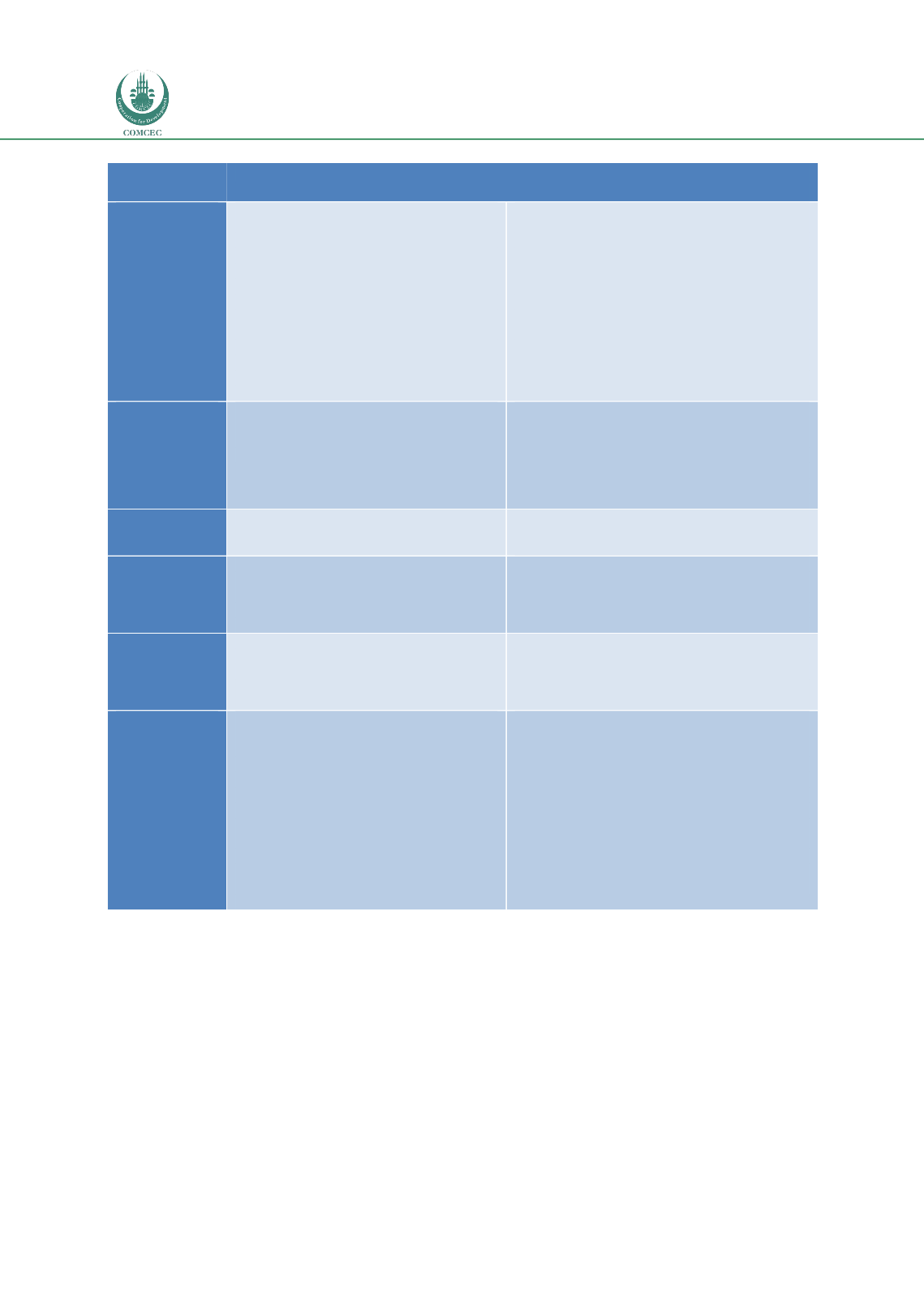

Reducing Postharvest Losses
In the OIC Member Countries
132
Case /desk
study
Causes of postharvest losses
Means for reduction of postharvest
losses
Cassava in
Nigeria
Losses occur at the farm, trading, transport
and handling, processing and retail and
consumption stages for both Gari and fufu, two
main products produced from fresh cassava in
Nigeria. Of these the most critical was
identified as harvest and processing. No single
measure that will reduce losses but rather a
number or series of interventions which
together will lead to reduced physical and
economic losses. The most critical are locating
the centre of processing close to the farm and
processing fresh roots with minimal of time
delays.
• Roots handled gently to minimize bruising and
breaking of the skin during loading and off-loading
along with appropriate supervision
• Farmers associations collectively hiring vehicles
for transportation
• Involvement of cassava processor and collector
associations; especially women
• Processing cassava close to the farms to minimise
handling and reduce delays
• Pack processed products in polyethylene packs
where feasible to reduce losses and shelf-life
• Availability of shelters in the open markets
Groundnuts in
Senegal
Poor postharvest handling methods. Poor
storage and shelling nearer to the point of sale
and avoid wetting the nuts when selling. Nuts
are often traded when not fully dried.
Training of farmers as well as traders and
micro/small-scale processors.
Promote structured marketing systems
Easing access to finance as at the postharvest level
to encourage compliance.
Policy support for the market development
initiatives.
Tomatoes in
Bangladesh
Poor packaging and transport.
Training. Grading, Water loss, Packaging – use of
plastic crates, Cooling (use of Cool Bot cooling
system), Solar drying Needs-based extension
Meat and
meat products
in Oman
For Domestic production. Market distortion
by policy makers and no market standards.
Slaughter of animals within the household
leading to under-use of by-products (offal,
blood, skin, hides etc.). Poor feed conversion
Changes to the marketing system would be required
as operate a fixed price system. No single
organisation responsible for postharvest losses.
Informing policy makers of benefits of reducing
postharvest losses.
Dairy and
Dairy
Products in
Uganda
The occur during milking, at milk collection
centres, during processing, marketing and
consumption
Implementation of a code of practice, organisation of
the informal sector, inspection and monitoring,
registration, training and testing of dairy products
Indonesian
Fisheries
Sector
Economic losses were the main problem.
Poor quality raw material due to poor on-
board handling is landed and delivered for
further processing or on-sale, resulting in
economic losses.
Excessive soak time in nets results in economic
losses.
Poor on-shore handling & storage results in
economic losses
Poor hygiene results in economic losses.
Physical losses are generally minimal (less
than 5%). However they do occur through
discarded by-catch and through pilferage.
The Government of Indonesia takes a proactive
approach to combatting PHLs in fish. Strategies that
it has adopted include:
• Introducing legislation setting minimum quality
and hygiene standards
• Developing better handling procedures
• Introducing improved technology
• Improving infrastructure – landing sites, markets,
access to ice, cold chain, jetties
• Community engagement, and possibly most
importantly,
• Skills training and capacity strengthening
















